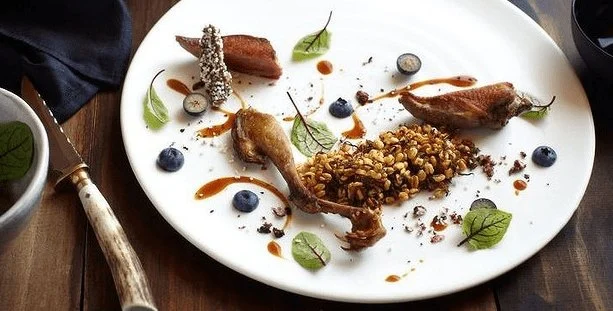
How Restaurants Are Experimenting With Texture and Flavour in Australian Menus
- Why Texture and Flavour Matter in Cuisine
- The Rise of Texture Experimentation in Australian Restaurants
- Innovative Flavour Combinations in Australian Dishes
- The Impact of Technology on Cooking Techniques
- Successful Examples of Texture and Flavour Experiments
- The Future of Texture and Flavour in Australian Dining
1. Why Texture and Flavour Matter in Cuisine
The combination of texture and flavour is fundamental in creating memorable dining experiences. In the culinary world, these two elements work together to elevate a dish, affecting both the taste and overall enjoyment of food. As Australian cuisine continues to evolve, chefs are paying more attention to how texture and flavour interplay, offering innovative dishes that surprise and delight the senses.
Texture plays a critical role in a dish’s mouthfeel—whether it’s the crunch of a crispy skin, the smoothness of a velvety sauce, or the contrast between soft and firm components. Flavour, on the other hand, adds depth and complexity to the experience. Together, they can transform a simple meal into a gastronomic adventure.

El Corte – Argentinian Steakhouse
Darling HarbourCouncil of the City of SydneyNew South Wales
Shop 2 C08, Ground Floor, ICC Sydney Darling Harbour, Sydney, Darling Harbour NSW 2000, Australia
2. The Rise of Texture Experimentation in Australian Restaurants
In recent years, Australian chefs have started experimenting more with texture, incorporating unexpected elements into their dishes to create unique experiences. For example, some chefs are introducing foams, gels, and powders made from natural ingredients to add a playful texture to their creations. Others are perfecting techniques such as sous-vide cooking or fermenting, which can result in unexpected textures, like tender meats or chewy vegetables.

Sushi Hotaru Charcoal Bar
SydneyCouncil of the City of SydneyNew South Wales
LG2/455 George St, Sydney NSW 2000, Australia
1. Using Foams and Gels for Lightness and Airiness
Foams and gels have become popular in modern Australian kitchens. Chefs use these techniques to add lightness and airiness to dishes like soups, meats, and desserts. For example, a lemon foam on a seafood dish can provide a burst of citrus without overwhelming the palate, while a vegetable gel can add a surprising texture to a salad or cold appetizer.
2. Playful Contrasts: Combining Soft and Crunchy
Contrast is key when it comes to texture. Many Australian restaurants are experimenting with combining soft, delicate ingredients with crunchy ones. Think of soft-cooked egg yolks paired with crispy bacon, or a creamy risotto topped with roasted nuts. These contrasts engage the senses, adding both visual and tactile interest to a dish.
3. Innovative Flavour Combinations in Australian Dishes
Flavour experimentation in Australian restaurants isn’t just about trying new ingredients—it's also about combining familiar ones in unexpected ways. Chefs are drawing on Australia’s multicultural influences, merging Indigenous ingredients with international flavours, creating exciting fusions.
1. Indigenous Flavours Meet Modern Techniques
One of the most exciting trends in Australian cuisine is the incorporation of Indigenous ingredients, like finger lime, wattleseed, and bush tomatoes, into modern dishes. These native elements are combined with contemporary techniques to create truly distinctive flavours that reflect Australia’s rich culinary heritage.
2. Sweet and Savory Pairings
Pairing sweet and savory flavours is another bold flavour trend. For instance, chefs might pair roasted meats with a tangy fruit chutney or add a touch of honey to a savory herb sauce. This blend of contrasting tastes creates depth and intrigue, keeping diners on their toes with each bite.
4. The Impact of Technology on Cooking Techniques
Technology has played a significant role in shaping modern Australian menus, particularly when it comes to texture and flavour. Advances in cooking methods, such as sous-vide, molecular gastronomy, and high-tech ovens, have opened up new possibilities for chefs to experiment with ingredients and textures that weren’t possible before.
1. Sous-Vide Cooking for Perfect Textures
Sous-vide, a technique that involves cooking food in vacuum-sealed bags at low temperatures, allows for the creation of textures that are both tender and juicy. It’s particularly effective for meats and vegetables, ensuring that each component retains its natural moisture and flavour while achieving the perfect texture.
2. Molecular Gastronomy: Shaping Texture and Taste
Molecular gastronomy is another innovative method that’s gaining popularity in Australian restaurants. This technique uses scientific principles to manipulate the physical and chemical properties of ingredients, resulting in textures and flavours that surprise diners—like turning liquids into solid spheres or creating edible ‘caviar’ from fruit juices.
5. Successful Examples of Texture and Flavour Experiments
Several Australian restaurants have pioneered successful texture and flavour experiments that have garnered attention both locally and internationally. These chefs are redefining what it means to eat with all five senses, combining culinary creativity with technical precision.
1. Attica: Playing with Local Ingredients
Attica, a renowned Melbourne restaurant, has been experimenting with local Indigenous ingredients and using innovative techniques to create dishes that offer both bold flavours and intriguing textures. For instance, their famous ‘black ants’ are paired with custard, creating a combination of crunchy and creamy that is as unexpected as it is delicious.
2. Quay: Modernizing Australian Classics
Quay in Sydney has also become known for pushing the boundaries of texture and flavour. One of their standout dishes features a delicate emulsion of seaweed, which combines the earthy flavour of the ocean with a smooth, silky texture that elevates the dish to new heights.
6. The Future of Texture and Flavour in Australian Dining
The future of Australian dining will continue to see chefs pushing the boundaries of texture and flavour experimentation. As culinary techniques evolve and new ingredients are introduced, diners can expect even more innovative and exciting dishes that challenge their expectations.
We can expect more restaurants to incorporate sustainable ingredients, enhance traditional dishes with modern textures, and experiment with interactive dining experiences. The role of technology in cooking will only continue to grow, enabling chefs to create complex textures and nuanced flavours that were once impossible to achieve.
For more insights on where to experience the latest in Australian dining trends, visit Sydney Eats Explorer, your guide to the best restaurants and culinary innovations in Australia.


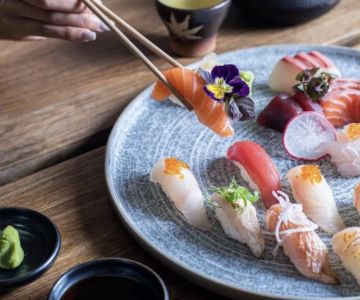
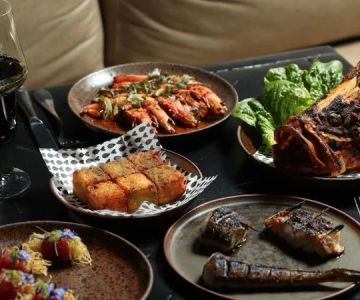

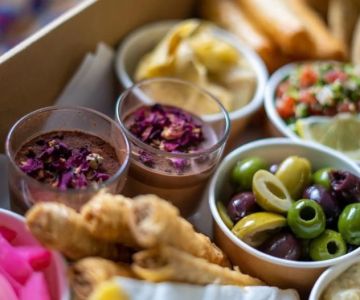

 Kagoshima Master Yakiniku Ultimo4.0 (802 reviews)
Kagoshima Master Yakiniku Ultimo4.0 (802 reviews) LAN GARDEN4.0 (19 reviews)
LAN GARDEN4.0 (19 reviews) OZEKI BOWL Westfield4.0 (57 reviews)
OZEKI BOWL Westfield4.0 (57 reviews) Planar Restaurant4.0 (3872 reviews)
Planar Restaurant4.0 (3872 reviews) Mad Mex Sydney Central Plaza3.0 (420 reviews)
Mad Mex Sydney Central Plaza3.0 (420 reviews) SWEET CREMA CAFE5.0 (20 reviews)
SWEET CREMA CAFE5.0 (20 reviews)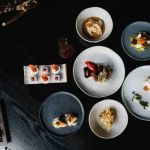 How Australian Restaurants Are Offering Multi-Sensory Dining Experiences
How Australian Restaurants Are Offering Multi-Sensory Dining Experiences How Gen Z Is Shaping Australia’s Restaurant Menu Trends
How Gen Z Is Shaping Australia’s Restaurant Menu Trends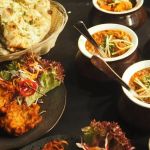 The Best Indian Restaurants in Australia for Authentic Flavours | Sydney Eats Explorer
The Best Indian Restaurants in Australia for Authentic Flavours | Sydney Eats Explorer How Restaurants Are Using Climate-Smart Menus and Sustainable Ingredients in Australia
How Restaurants Are Using Climate-Smart Menus and Sustainable Ingredients in Australia How Restaurants Are Using Sustainability Certifications to Attract Diners in Australia
How Restaurants Are Using Sustainability Certifications to Attract Diners in Australia How AI Is Personalising Dining in Australia - The Future of Restaurants
How AI Is Personalising Dining in Australia - The Future of Restaurants